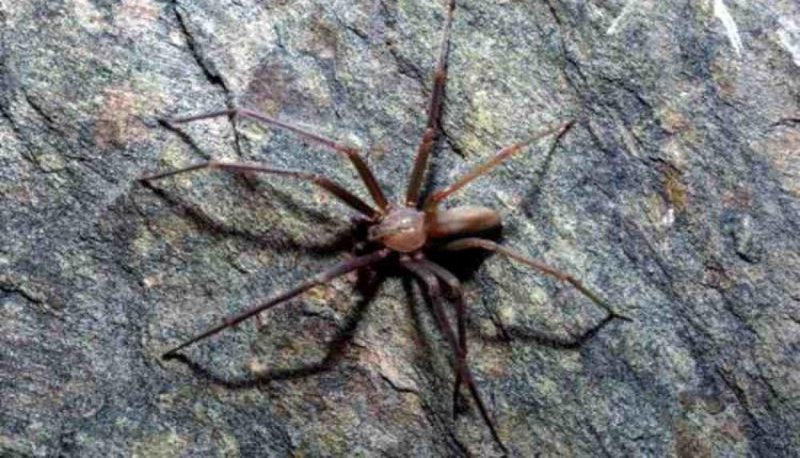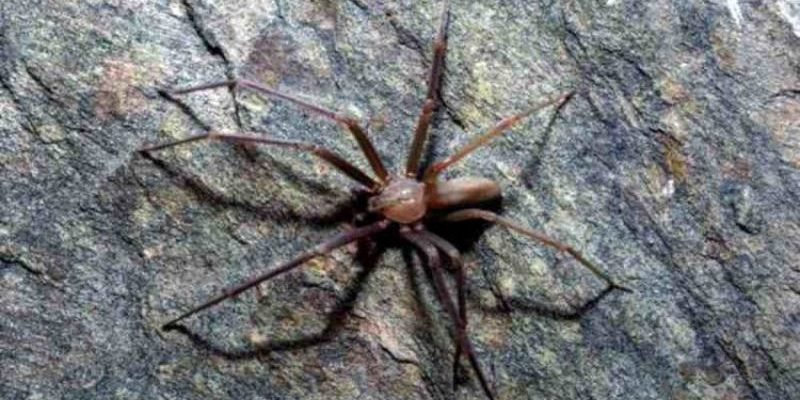
The Brown Recluse Spider is often misunderstood. With its notorious reputation, it’s easy to quickly assume that every brown spider is a deadly foe. However, this spider is more shy than aggressive. If we think of it as an introvert in the spider world, it would prefer to keep to itself rather than confront you. Unlike many other spiders, the Brown Recluse is not out for blood; it only bites as a last resort when it feels threatened.
Identifying a Brown Recluse can be tricky, especially since it blends into its surroundings. It’s important to learn how to recognize this spider and understand its behavior. Knowing more about them can help you appreciate their unique role in our ecosystem, as well as keep you safe and informed. Let’s dive into the fascinating world of the Brown Recluse Spider!
Physical Characteristics
The Brown Recluse Spider is relatively small, with a body size of about 6 to 20 mm (0.24 to 0.79 inches) when you include the legs. Its distinctive coloring ranges from light brown to a darker, almost tan hue. One key feature that stands out is the violin-shaped marking on its back, which is often why it’s referred to as the “violin spider.” This marking is an important identifier, but remember, not all brown spiders will have it. The legs are long and slender, allowing them to move swiftly when necessary.
Even the size of a Brown Recluse’s eyes is noteworthy. They have six eyes arranged in a unique pattern—a trait that sets them apart from most spiders, which typically have eight eyes. While their appearance may not seem fearsome, their secretive nature often leads to unexpected encounters with humans, usually when someone inadvertently disturbs their hiding spot.
Another important characteristic to note is their relatively long lifespan. In the right conditions, a Brown Recluse can live for up to 2 to 3 years. This longevity is part of what allows their populations to grow in an area when they find suitable hiding spots. Therefore, learning to identify them can not only enhance your knowledge but also help reduce unwanted encounters.
Habitat and Geographic Distribution
The Brown Recluse Spider thrives in warm, dry environments. You’ll typically find them in the central and southern United States, particularly in states like Texas, Missouri, and Arkansas. They prefer safe, dark places where they can hide, such as attics, basements, and even closets. If you happen to live in an area that gets hot and dry, your home might be an ideal location for them to take refuge.
These spiders are experts at finding nooks and crannies where they can stay out of sight. Their preferred habitats often include woodpiles, sheds, and even under furniture. If your house has these hidden corners, it might become their cozy home. Understanding their habitat preferences can help you take preventative measures to limit their presence around your living space.
During the warmer months, these spiders may venture outside, but they generally prefer the indoors as temperatures drop. You might be wondering why they don’t just stay outside. This is because indoors offers a more stable environment in terms of temperature and humidity, which is vital for their survival. Keeping this in mind can help you maintain a spider-free home with a little effort.
Diet and Hunting Behavior
Like many spiders, the Brown Recluse Spider is a skilled predator. It primarily feeds on small insects such as flies, beetles, and crickets, playing a vital role in controlling pest populations. Instead of spinning a web to catch its prey, the Brown Recluse hunts by stealth, waiting in its hiding spots until its unsuspecting prey comes close.
When hunting, the Brown Recluse uses its keen senses to detect movement. Once it spots an insect, it pounces quickly and injects venom to subdue the prey. While this venom isn’t dangerous to humans (unless bitten), it is potent enough to immobilize small insects. This is where their introverted nature comes in handy—rather than showing off in a web, they wait and pounce.
You might be curious about their feeding habits. Brown Recluses typically feed every few days, allowing them to conserve energy. They don’t require large meals to survive, which is part of their survival strategy. This efficiency helps them thrive in environments where food may not always be abundant, as they can quickly adapt to whatever their surroundings provide.
Reproduction and Lifespan
When it comes to reproduction, the Brown Recluse Spider has an interesting life cycle. Mating typically occurs in late spring to early summer. After mating, female Brown Recluses can lay anywhere from 20 to 50 eggs in a single egg sac. These sacs are often hidden in dark crevices, where they can develop without disturbance. The baby spiders, known as spiderlings, emerge in about a month and are miniature versions of adults, ready to fend for themselves.
As previously mentioned, a Brown Recluse can live for several years, which is rather impressive for a spider. Their life span allows them multiple opportunities to breed and contribute to the population. However, environmental conditions play a major role in their survival. Factors like temperature and availability of food can greatly impact their lifespan and reproductive success.
In a laboratory setting, researchers have studied their reproductive habits extensively. They have found that the right conditions can lead to successful breeding, even in captivity. This knowledge provides valuable insights that can help manage their populations in areas where they are considered problematic.
Health Risks and Myths
When you hear about the Brown Recluse Spider, it’s often accompanied by tales of danger and panic. While it’s true that their bites can cause serious health issues in some cases, many myths surrounding their danger are exaggerated. A Brown Recluse bite can lead to necrosis, which is the death of tissue around the bite area. However, this is rare, and most bites result in minor irritation, much like a bee sting.
Here’s the thing: a Brown Recluse rarely bites unless provoked. Most incidents occur when the spider is accidentally squished or trapped against skin. If you find a Brown Recluse in your home, it’s best to let it be. If you must remove it, use a glass or jar to trap it and take it outside instead of trying to kill it.
It’s also crucial to understand that not all brown spiders are Brown Recluses. Many harmless spiders share similar coloring. Therefore, knowing the identifying features can help alleviate unnecessary fear and avoid misidentification. If bitten, it’s essential to seek medical attention, especially if symptoms worsen—better safe than sorry!
Prevention and Control
If you want to keep Brown Recluse Spiders at bay, there are a few straightforward steps you can take. First, reduce clutter in your home, especially in basements and attics. These spots are prime real estate for spiders looking for a cozy place to hide. Regularly vacuuming and dusting can also help by removing any webs and egg sacs.
Another effective method is sealing cracks and crevices around windows, doors, and foundations. This not only helps keep spiders out but improves your home’s overall energy efficiency too—talk about a win-win! If you notice any signs of Brown Recluses, such as webs or shed skins, it might be time for some proactive measures.
Some people prefer to use natural deterrents, like essential oils. Spritzing areas with peppermint or tea tree oil might help deter these eight-legged visitors. However, if you find yourself facing a larger infestation, it may be time to call in a pest control professional who can handle the situation safely and effectively.
The Brown Recluse Spider might seem terrifying, but it’s crucial to approach this creature with a calm perspective. By understanding its nature, habits, and how to safely coexist, you can reduce the fear that often surrounds it. They play a significant role in our ecosystem and, when respected, can continue to thrive without posing a threat to humans. Educate yourself and your loved ones about this intriguing spider, and you’ll find that knowledge is your best ally.
FAQ
Are Brown Recluse Spiders aggressive?
No, Brown Recluse Spiders are not aggressive. They tend to avoid confrontation and will only bite when they feel threatened. Most incidents occur when someone accidentally squishes or traps them. If you give them space, they usually won’t bother you!
What should I do if I get bitten?
If you suspect a Brown Recluse bite, it’s essential to seek medical attention promptly. Look for symptoms such as pain, redness, or swelling around the bite area. In some cases, a doctor may prescribe medication to manage symptoms and prevent infection. Early intervention is crucial.
How can I identify a Brown Recluse Spider?
To identify a Brown Recluse, look for its violin-shaped marking on its back, six eyes arranged in pairs, and its long, slender legs. However, remember that not all brown spiders with similar markings are Brown Recluses, so it’s essential to confirm before jumping to conclusions.
Do they only live indoors?
While Brown Recluse Spiders prefer indoor environments because of stable conditions, they can also be found outdoors in warm, dry areas. They often hide in woodpiles, sheds, or under rocks. Understanding their habitat preferences can help you manage their presence.
What do they eat?
Brown Recluse Spiders primarily feed on small insects, such as flies and crickets. They are skilled predators, using their stealth to catch prey rather than spinning webs. This diet is crucial for controlling pest populations around your home.
Can I keep them as pets?
While some people might be tempted to keep a Brown Recluse as a pet due to its unique appearance, it’s not advisable. Their defensive behavior and venomous nature make them unsuitable for handling. Instead, appreciate their beauty from a distance and observe them safely in their natural environment.
How can I prevent them from entering my home?
You can prevent Brown Recluse Spiders from entering your home by reducing clutter, sealing cracks, and regularly cleaning hidden areas like attics and basements. Keeping your home tidy and sealing off entry points can significantly reduce the chances of an unwelcome visitor.
Are there any natural deterrents for Brown Recluse Spiders?
Yes, natural deterrents like essential oils—especially peppermint or tea tree oil—can help repel Brown Recluse Spiders. Spraying these oils in areas where you suspect spider activity may help keep them at bay without harmful chemicals.
What do I do if I see one in my home?
If you spot a Brown Recluse Spider in your home, it’s best to let it be. If you need to remove it, use a jar or glass to trap it and release it outside. Do not try to kill it, as this can provoke an aggressive response. Respect for these creatures is key!
What are the common misconceptions about Brown Recluse Spiders?
Many misconceptions surround Brown Recluse Spiders, especially regarding their danger level. While bites can happen, they are often exaggerated. Most Brown Recluse encounters result in only mild irritation, similar to a bee sting. Understanding these myths can help alleviate unnecessary fears.

